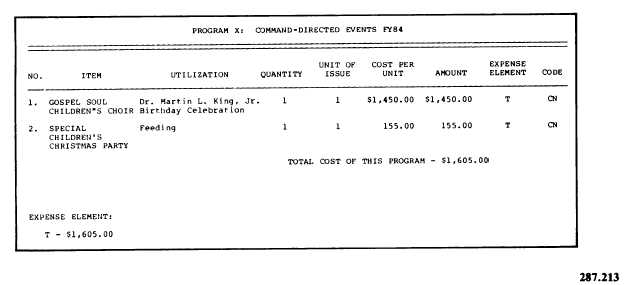||content||
. The CRP or RP1, the chaplain, the Chapel
Council President, and other budget planners
should then make their input to the budgetary
process. For example, a council member con-
cerned with religious education may be asked to
present a budget estimate for the funding of
religious education material for the fiscal year.
Likewise, the RP who is serving as supply petty
officer may be asked to provide a figure for
supplies for the fiscal year. These requests are
translated into line items. Guidance for this
portion of the budgeting process is found in the
Command Religious Program Planning Guide.
Figure 4-21 shows the cover page from the
Command Religious Program Planning Guide.
This publication is available from the chaplain
Resource Board in Norfolk, Virgina.
EXPENSE ELEMENTS
Each expense element should reconsidered
individually when the budget is being planned.
When line items are being planned, each calcula-
tion coded under an expense element should be
estimated as closely as possible. For example,
including a lump sum of 0 for temporary
duty travel (TDY travel) will not suffice. The RPC
or RP1 should check with the travel section of
the local disbursing office to ascertain the current
rates allowed for TDY travel, per diem, and
related expenses.
Most line items in the CRP budget can be
categorized by the listing of expense elements
4-18

